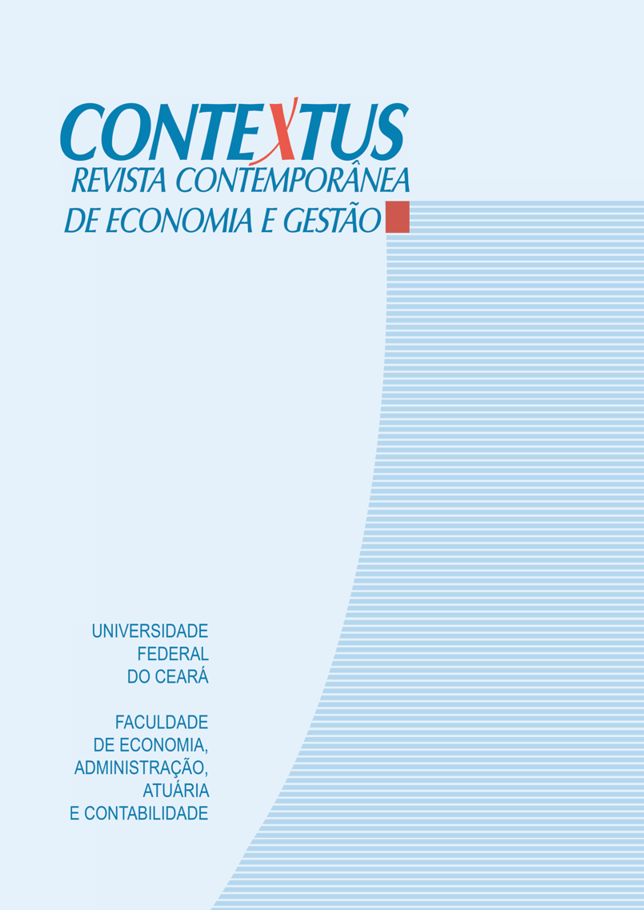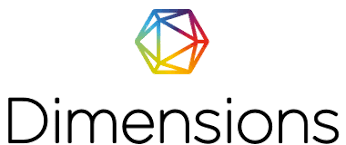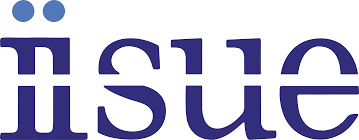Relación de la utilidad presupuestaria en el empoderamiento y la creatividad
DOI:
https://doi.org/10.19094/contextus.2020.43566Palabras clave:
creatividad, utilidades de presupuesto, empoderamiento, control de gestión, tecnologías de la informaciónResumen
El estudio tiene como objetivo analizar la relación entre el nivel de utilidad percibida del presupuesto en el empoderamiento y la creatividad. Se desarrolló una investigación exploratoria cuantitativa, con datos primarios de un cuestionario aplicado a 100 gerentes en organizaciones brasileñas de tecnología de la información. El tratamiento de los datos se llevó a cabo mediante modelado de ecuaciones estructurales. La utilidad percibida del presupuesto proporciona a los empleados la creencia de que tienen la libertad de tomar decisiones, dentro de un cierto límite de espacio definido, que proporciona la estructura de apoyo y autonomía necesaria para el empoderamiento y, a su vez, la creatividad.
Citas
Amabile, T. M., & Pillemer, J. (2012). Perspectives on the social psychology of creativity. The Journal of Creative Behavior, 46(1), 3-15. https://doi.org/10.1002/jocb.001
Amabile, T. M., Conti, R., Coon, H., Lazenby, J., & Herron, M. (1996). Assessing the work environment for creativity. Academy of management journal, 39(5), 1154-1184. https://doi.org/10.5465/256995
Arnold, M. C., & Gillenkirch, R. M. (2015). Using negotiated budgets for planning and performance evaluation: an experimental study. Accounting, organizations and society, 43, 1-16. https://doi.org/10.1016/j.aos.2018.06.001
Arnold, M., & Artz, M. (2019). The use of a single budget or separate budgets for planning and performance evaluation. Accounting, organizations and society, 73, 50-67. https://doi.org/10.1016/j.aos.2018.06.001
Bedford, D. S. (2015). Management control systems across different modes of innovation: Implications for firm performance. Management Accounting Research, 28, 12-30. https://doi.org/10.1016/j.mar.2015.04.003
Chen, C. X. (2017). Management control for stimulating different types of creativity: The role of budgets. Journal of Management Accounting Research, 29(3), 23-26. https://doi.org/10.2308/jmar-51795
Cools, M., Stouthuysen, K., & Van den Abbeele, A. (2017). Management control for stimulating different types of creativity: The role of budgets. Journal of Management Accounting Research, 29(3), 1-21. https://doi.org/10.2308/jmar-51789
Curtis, E., & Sweeney, B. (2017). Managing different types of innovation: mutually reinforcing management control systems and the generation of dynamic tension. Accounting and Business Research, 47(3), 313-343. https://doi.org/10.1080/00014788.2016.1255585
Dal Magro, C. B., & Lavarda, C. E. F. (2015). Evidências sobre a caracterização e utilidade do orçamento empresarial nas indústrias de Santa Catarina. Advances in Scientific and Applied Accounting, 8(1), 039-062. https://doi.org/10.14392/asaa.2015080103
Davila, A., & Ditillo, A. (2017). Management Control Systems for Creative Teams: Managing Stylistic Creativity in Fashion Companies. Journal of Management Accounting Research, 29(3), 27-47. https://doi.org/10.2308/jmar-51806
Deci, E. L., & Ryan, R. M. (1987). The support of autonomy and the control of behavior. Journal of personality and social psychology, 53(6), 1024. https://doi.org/10.1037/0022-3514.53.6.1024
Ekholm, B. G., & Wallin, J. (2011). The impact of uncertainty and strategy on the perceived usefulness of fixed and flexible budgets. Journal of Business Finance & Accounting, 38(1‐2), 145-164. https://doi.org/10.1111/j.1468-5957.2010.02228.x
Farmer, S. M., Tierney, P., & Kung-Mcintyre, K. (2003). Employee creativity in Taiwan: An application of role identity theory. Academy of Management Journal, 46(5), 618-630. https://doi.org/10.2307/30040653
Fornell, C., & Larcker, D. F. (1981). Structural equation models with unobservable variables and measurement error: Algebra and statistics.
Grabner, I., & Speckbacher, G. (2016). The cost of creativity: A control perspective. Accounting, Organizations and Society, 48, 31-42. https://doi.org/10.1016/j.aos.2015.11.001
Hair Jr., J. F., Black, W. C., Babin, B. J., Anderson, R. E., & Tatham, R. L. (2009). Análise multivariada de dados. Bookman Editora.
Hair Jr., J. F., Hult, G. T. M., Ringle, C. M. & Sarstedt, M. (2014). A primer on partial least squares structural equation modeling (PLS-SEM). Thousand Oaks: Sage. https://doi.org/10.1108/EBR-10-2013-0128
Hartline, M. D., & Ferrell, O. C. (1996). The management of customer-contact service employees: an empirical investigation. The Journal of Marketing, 60(4), 52-70. https://doi.org/10.2307/1251901
Henri, J. F., & Wouters, M. (2019). Interdependence of management control practices for product innovation: The influence of environmental unpredictability. Accounting, Organizations and Society, 101073. https://doi.org/10.1016/j.aos.2019.101073
Hirst, G., Van Knippenberg, D., Chen, C. H., & Sacramento, C. A. (2011). How does bureaucracy impact individual creativity? A cross-level investigation of team contextual influences on goal orientation–creativity relationships. Academy of Management Journal, 54(3), 624-641. https://doi.org/10.5465/amj.2011.61968124
Janka, M., & Guenther, T. W. (2018). Management control of new product development and perceived environmental uncertainty: Exploring heterogeneity using a finite mixture approach. Journal of Management Accounting Research, 30(2), 131-161. https://doi.org/10.2308/jmar-52019
Lambe, C. J., Webb, K. L., & Ishida, C. (2009). Self-managing selling teams and team performance: The complementary roles of empowerment and control. Industrial Marketing Management, 38(1), 5-16. https://doi.org/10.1016/j.indmarman.2007.10.003
Marôco, J. (2010). Análise de equações estruturais: fundamentos teóricos, software & aplicações. Pêro Pinheiro: ReportNumber.
Mucci, D., Frezatti, F., & Dieng, M. (2016). As múltiplas funções do orçamento empresarial. RAC-Revista de Administração Contemporânea, 20(3). http://dx.doi.org/10.1590/1982-7849rac2016140121
Müller-Stewens, B., Widener, S. K., Möller, K., & Steinmann, J. C. (2020). The role of diagnostic and interactive control uses in innovation. Accounting, Organizations and Society, 80, 101078. https://doi.org/10.1016/j.aos.2019.101078
Muzzio, H., & Paiva Júnior, F. G. de. (2015). A pertinência de adequação da gestão criativa à identidade do indivíduo criativo. Contextus – Revista Contemporânea de Economia e Gestão, 13(3), 139-155. https://doi.org/10.19094/contextus.v13i3.711
Ringle, C. M., Silva, D., & Bido, D. D. S. (2014). Modelagem de equações estruturais com utilização do SmartPLS. Revista Brasileira de Marketing, 13(2), 56-73. https://doi.org/10.5585/remark.v13i2.2717
Ryan, R. M., & Deci, E. L. (2000). Intrinsic and extrinsic motivations: Classic definitions and new directions. Contemporary educational psychology, 25(1), 54-67. https://doi.org/10.1006/ceps.1999.1020
Sierens, E., Vansteenkiste, M., Goossens, L., Soenens, B., & Dochy, F. (2009). The synergistic relationship of perceived autonomy support and structure in the prediction of self‐regulated learning. British Journal of Educational Psychology, 79(1), 57-68. https://doi.org/10.1348/000709908X304398
Simons, R. (1995a). Levers of control: How managers use innovative control systems to drive strategic renewal. Harvard Business Press.
Simons, R. (1995b). Control in an age of empowerment. Harvard Business Review (March/April): 80-88.
Sivabalan, P., Booth, P., Malmi, T., & Brown, D. A. (2009). An exploratory study of operational reasons to budget. Accounting & Finance, 49(4), 849-871. https://doi.org/10.1111/j.1467-629X.2009.00305.x
Speckbacher, G. (2017). Creativity Research in Management Accounting: A Commentary. Journal of Management Accounting Research, 29(3), 49-54. https://doi.org/10.2308/jmar-51754
Speklé, R. F., van Elten, H. J., & Widener, S. K. (2017). Creativity and Control: A Paradox—Evidence from the Levers of Control Framework. Behavioral Research in Accounting, 29(2), 73-96. https://doi.org/10.2308/bria-51759
Spreitzer, G. M. (1995). Psychological empowerment in the workplace: Dimensions, measurement, and validation. Academy of Management Journal, 38(5), 1442-1465. https://doi.org/10.2307/256865
Wåhlin, N., Blomquist, T., Knardal, P. S., & Pettersen, I. J. (2015). Creativity and management control–the diversity of festival budgets. International Journal of Managing Projects in Business, 8(4), 679-695. https://doi.org/10.1108/IJMPB-11-2014-0082
Descargas
Publicado
Cómo citar
Número
Sección
Licencia
Os autores, no ato da submissão, aceitam a declaração abaixo:
Nós autores mantemos sobre nosso artigo publicado os direitos autorais e concedemos à revista Contextus o direito de primeira publicação, com uma licença Creative Commons na modalidade Atribuição – Não Comercial 4.0 Internacional, a qual permite o compartilhamento com reconhecimento da autoria e da publicação inicial nesta revista.
Temos ciência de estarmos autorizados a assumir contratos adicionais separadamente, para distribuição não exclusiva da versão do trabalho publicada nesta revista (ex.: publicar em repositório institucional ou como capítulo de livro), também com reconhecimento tanto da autoria, quanto da publicação inicial neste periódico.
Atestamos que o artigo é original ou inédito, não foi publicado, até esta data, em nenhum periódico brasileiro ou estrangeiro, quer em português, quer em versão em outra língua, nem está encaminhado para publicação simultânea em outras revistas.
Sabemos que o plágio não é tolerado pela revista Contextus e asseguramos que o artigo apresenta as fontes de trechos de obras citadas, incluindo os de qualquer trabalho prévio produzido e publicado pelos próprios autores.









3.png)


1.jpg)



1.jpg)


1.jpg)






.jpg)



1.jpg)

1.jpg)


1.jpg)

1.jpg)
1.jpg)
2.png)




1.jpg)
2.jpg)

1.jpg)





1.jpg)


1.jpg)
1.jpg)
